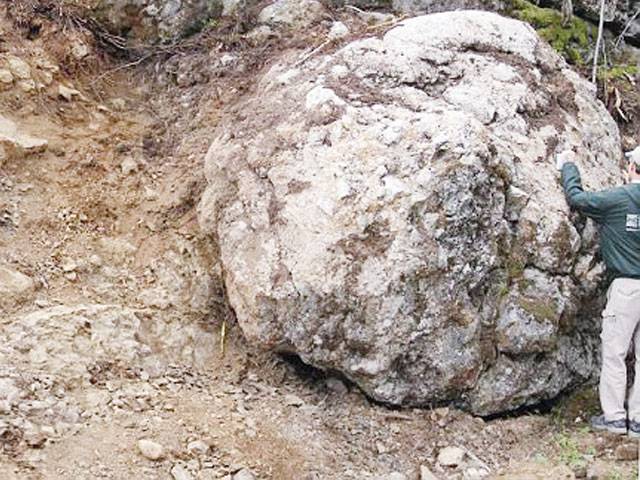Madrid (DM) - Craters from a double asteroid strike, described as ‘one of the largest cosmic catastrophes’ in the history of the solar system, have been uncovered in Sweden. The rare event took place around 458 million years ago, as a result of a mighty collision in the asteroid belt around 12 million years earlier. Nasa claims that if an asteroid was found to be on a collision course with Earth, there is a 15 per cent chance that it will be accompanied by a partner. The ancient smash-up occurred after a 120-mile (200km) asteroid broke up, scattering large chunks of rock, which later crossed Earth’s orbit. Two of these pieces slammed into shallow seas that covered modern-day Scandinavia, according to the study. With uplift of the Earth’s crust, the signature of that event lies in central Sweden - the 4.7 mile (7.5km) Lockne crater, located around 12.4 miles (20 km) south of the city of Oestersund, and a 0.4 miles (700 metre) crater at nearby Malingen. The study, published in the journal Scientific Reports, backs long-standing suspicions that these craters, just 9.9 miles (16 km) apart, were caused by a ‘doublet’, an extremely rare double whammy caused by asteroids travelling in pairs. It is thought that nearly 15 per cent of all asteroids travel in pairs, yet very few impact craters on Earth have been found as ‘doublets’.
The team, led by Jens Ormoe of the Centre for Astrobiology in Madrid, Spain, carried out drilling into the craters, looking for traces of sediment altered by impact shock.
They also mapped the halo of ejecta - a ring of debris hurled up by the smash, which landed up to tens of miles away from the inner crater.
The Lockne impact was created by an object about 1,960ft (600 metres) long, while the Malingen impactor was about 490ft (150 metres) long, the experts said.
They were so-called ‘rubble pile’ asteroids, or fragments travelling in a cluster.
‘Doublets’ are a debated area of astrophysics.
Modelling of asteroids that come close to Earth suggest that about 16 per cent of these objects travel in pairs.
But of the 188 known craters on Earth, only 10 - in Canada, Russia, Germany, Finland and Brazil - are considered to be serious candidates as doublets.
The twin impact 458 million years ago would be part of a ‘shower’ of meteors that pummelled Earth after the big breakup in the main asteroid belt.
Some experts theorise that this had dramatic consequences for Earth’s climate and ecosystems, encouraging an explosion in species called Great Ordovician Biodiversification event.
Saturday, April 20, 2024
458m years old cosmic catastrophes in Sweden

Freedom Flotilla prepares for humanitarian aid delivery to Gaza
9:14 AM | April 20, 2024
22 suspects arrested
April 20, 2024
Policitising Tragedy
April 20, 2024
Tehran to Rafah
April 20, 2024
A New Leaf
April 20, 2024
A Tense Neighbourhood
April 19, 2024
Dubai Underwater
April 19, 2024
Dangers of Deepfakes
April 20, 2024
Feudalism
April 20, 2024
Kite tragedy
April 19, 2024
Discipline dilemma
April 19, 2024
Urgent plea
April 19, 2024
ePaper - Nawaiwaqt
Advertisement
Nawaiwaqt Group | Copyright © 2024





